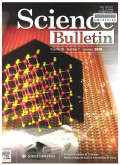- 钛学术文献服务平台 \
- 学术期刊 \
- 基础科学期刊 \
- 自然科学总论期刊 \
- 科学通报(英文版)期刊 \
A fast and effective method to perform paternity testing for Wolong giant pandas
A fast and effective method to perform paternity testing for Wolong giant pandas
基本信息来源于合作网站,原文需代理用户跳转至来源网站获取
摘要:
Captive populations provide a precious genetic resource for endangered animals and a source of individuals for reintroduction to depleted habitats. Therefore, accuracy in determining paternity is of vital importance for managing captive populations and in selecting representative individuals of known genetic characteristics for release. In this study, we established a fast and effective method to conduct paternity testing for captive giant pandas in the Wolong population. This technique uses two highly polymor phic microsatellites initially, subsequent use of five less polymorphic markers and then paternity exclusion testing carried out using the giant panda paternity exclusion program we have developed. Our results revealed that (1) both sets of markers success- fully identified the real fathers in 25 cases of paternity testing and (2) the success rate of paternity exclusion varied with the degree of polymorphism of the markers used. Subsequently, we conducted correlation analysis between the success rates of paterni- ty identification with these markers, parameters of genetic diversity and tests of neutrality. We found that the paternity exclusion power of microsatellites was significantly correlated with the number of alleles (Na), expected heterozygosity (HE) and observed homozygosity statistic (FO) (all P < 0.05). From this, we developed a new variable, Na?HE/FO, showing a highly significant positive correlation with the resolution power of microsatellites (P = 0.001). Moreover, the first two highly polymorphic loci gave a 100% success rate of excluding non-paternal males because they yielded higher values of Na?HE/FO than the other five less pol- ymorphic markers. Thus, the Na?HE/FO parameter appears suitable to serve as a criterion for selecting microsatellite markers, which could be used for high-resolution molecular techniques of paternity determination among a range of captive animals besides giant pandas.

推荐文章
EAP-FAST安全认证协议分析
EAP-FAST
安全
认证
FAST TCP拥塞控制机制研究
FAST TCP
拥塞控制
反馈时延
The oxygen isotopic composition of phosphate as an effective tracer for phosphate sources in Hongfen
Phosphate source
δ18OP
Eutrophication
Hongfeng Lake
基于对称FAST特征的车辆目标检测方法
车辆检测
对称特征
FAST特征点
特征描述
阴影特征
内容分析
关键词云
关键词热度
相关文献总数
(/次)
(/年)
引文网络
引文网络
二级参考文献 (0)
共引文献 (0)
参考文献 (0)
节点文献
引证文献 (0)
同被引文献 (0)
二级引证文献 (0)
2011(0)
- 参考文献(0)
- 二级参考文献(0)
- 引证文献(0)
- 二级引证文献(0)
引文网络交叉学科
相关学者/机构
期刊影响力
科学通报(英文版)
主办单位:
中国科学院
出版周期:
半月刊
ISSN:
1001-6538
CN:
11-1785/N
开本:
大16开
出版地:
北京东黄城根北街16号
邮发代号:
2-177
创刊时间:
1950
语种:
eng
出版文献量(篇)
9507
总下载数(次)
1
期刊文献
相关文献
推荐文献
- 期刊分类
- 期刊(年)
- 期刊(期)
- 期刊推荐
力学
化学
地球物理学
地质学
基础科学综合
大学学报
天文学
天文学、地球科学
数学
气象学
海洋学
物理学
生物学
生物科学
自然地理学和测绘学
自然科学总论
自然科学理论与方法
资源科学
非线性科学与系统科学
科学通报(英文版)2022
科学通报(英文版)2021
科学通报(英文版)2020
科学通报(英文版)2019
科学通报(英文版)2018
科学通报(英文版)2017
科学通报(英文版)2016
科学通报(英文版)2015
科学通报(英文版)2013
科学通报(英文版)2012
科学通报(英文版)2011
科学通报(英文版)2010
科学通报(英文版)2009
科学通报(英文版)2008
科学通报(英文版)2007
科学通报(英文版)2006
科学通报(英文版)2005
科学通报(英文版)2004
科学通报(英文版)2003
科学通报(英文版)2002
科学通报(英文版)2001
科学通报(英文版)2000
科学通报(英文版)2011年第9期
科学通报(英文版)2011年第8期
科学通报(英文版)2011年第7期
科学通报(英文版)2011年第6期
科学通报(英文版)2011年第4期
科学通报(英文版)2011年第36期
科学通报(英文版)2011年第35期
科学通报(英文版)2011年第34期
科学通报(英文版)2011年第33期
科学通报(英文版)2011年第32期
科学通报(英文版)2011年第31期
科学通报(英文版)2011年第30期
科学通报(英文版)2011年第3期
科学通报(英文版)2011年第28期
科学通报(英文版)2011年第27期
科学通报(英文版)2011年第26期
科学通报(英文版)2011年第25期
科学通报(英文版)2011年第24期
科学通报(英文版)2011年第23期
科学通报(英文版)2011年第22期
科学通报(英文版)2011年第21期
科学通报(英文版)2011年第20期
科学通报(英文版)2011年第2期
科学通报(英文版)2011年第19期
科学通报(英文版)2011年第18期
科学通报(英文版)2011年第17期
科学通报(英文版)2011年第16期
科学通报(英文版)2011年第15期
科学通报(英文版)2011年第14期
科学通报(英文版)2011年第13期
科学通报(英文版)2011年第12期
科学通报(英文版)2011年第11期
科学通报(英文版)2011年第10期
科学通报(英文版)2011年第1期

 免费查重
免费查重










